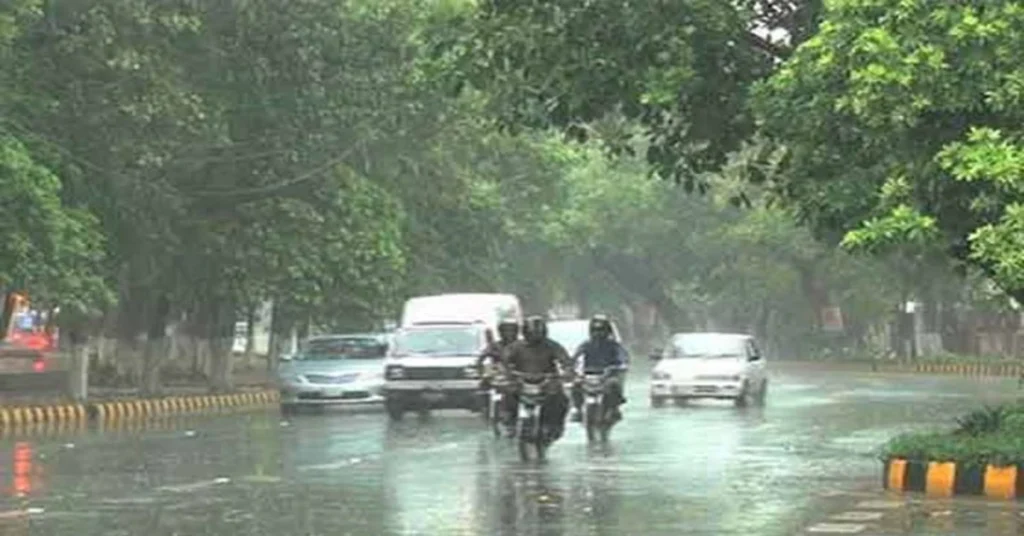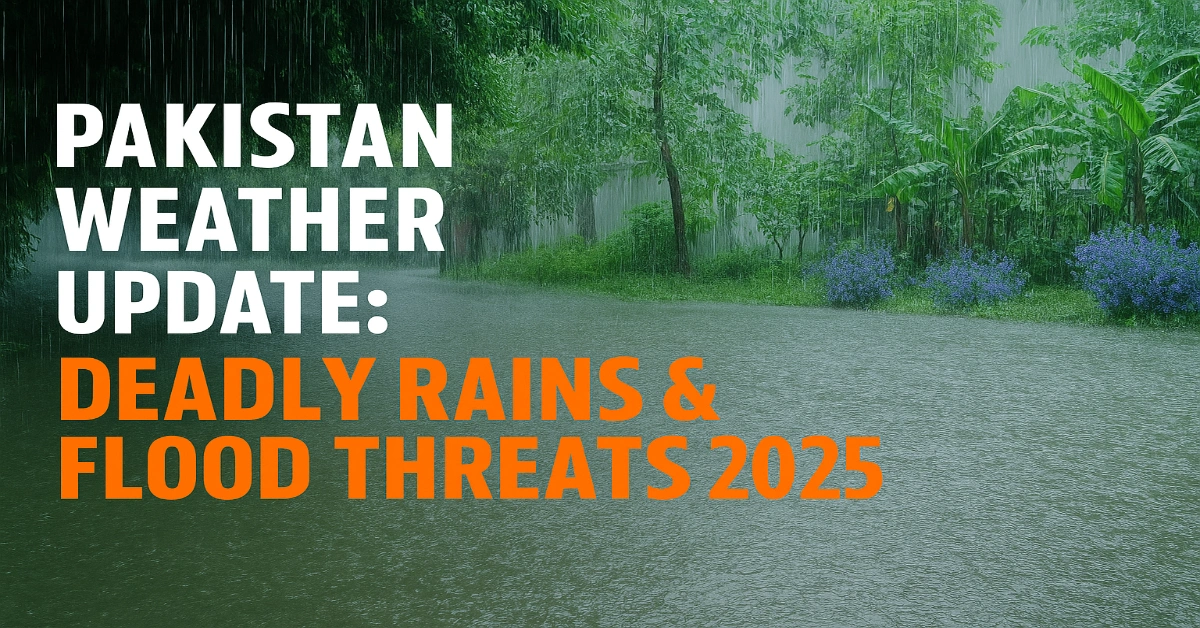Pakistan weather faces deadly rains and rising flood threats in 2025. Karachi, KPK, and major cities brace for monsoon chaos with alerts and safety warnings.
Karachi weather: Monsoon Rain hits
The Karachi weather crisis has drawn international attention. Within a span of just 48 hours, the metropolis received record-breaking rainfall, leading to severe urban flooding in several neighborhoods. Roads turned into rivers, public transport was suspended, and thousands of residents were stranded in their homes.
According to the Pakistan Meteorological Department (PMD), Karachi recorded over 160 mm of rainfall near the airport and nearly 180 mm in northeastern areas, making it one of the heaviest spells since the devastating rains of 2020. Low-lying areas such as North Karachi, Gulistan-e-Jauhar, Saddar, and Malir were submerged, forcing authorities to declare an emergency.
Officials issued warnings for residents to avoid unnecessary travel, as drainage systems remain overwhelmed and power outages have made conditions worse. The ongoing Karachi weather challenges highlight how vulnerable the city is to changing climate patterns.
Hyderabad Weather: Monsoon Showers Intensify
Not far from Karachi, the Hyderabad weather situation also deteriorated as monsoon clouds brought heavy showers to the city. Major commercial zones, including Latifabad and Qasimabad, reported waterlogging, disrupting businesses and transport.
The PMD forecast indicates more rainfall in Hyderabad over the coming week, with chances of thunderstorms in certain areas. While the rainfall has helped lower the scorching summer heat, the water accumulation has exposed gaps in drainage and urban planning.
KPK Weather: Deadly Flash Floods and Cloudbursts
The KPK weather pattern this year has been particularly alarming. Unlike Karachi and Hyderabad, where the challenge is largely urban flooding, Khyber Pakhtunkhwa has been devastated by flash floods and cloudbursts. Districts including Swat, Buner, Battagram, and Bajaur witnessed catastrophic flooding that destroyed villages within minutes.
Latest figures confirm that over 340 people have lost their lives in KPK alone due to torrential rains and floods since mid-August. Hundreds of homes have been washed away, crops destroyed, and thousands displaced. Rescue operations are underway, but officials admit that accessibility to remote areas remains a major challenge.
Experts attribute these sudden and intense weather events to climate change, pointing out that rising global temperatures are increasing the likelihood of cloudbursts in mountainous regions. The KPK weather emergency is a stark reminder of how fragile the province is to environmental disasters.
Situation in Other Major Cities
Lahore
In Punjab’s capital, the Pakistan weather system has brought intermittent heavy rainfall. While the city has avoided severe flooding so far, drainage blockages in older neighborhoods like Mozang, Islampura, and Shahdara have created local emergencies. Authorities remain cautious, as further heavy downpours could quickly escalate into a flood-like situation.
Islamabad & Rawalpindi
In the twin cities, moderate to heavy rainfall has been recorded, with low-lying areas near Nullah Leh once again under flood threat. Authorities have deployed pumps and monitoring teams to control the flow, but Rawalpindi residents remain vulnerable every monsoon season due to the overflow of Nullah Leh.
Quetta
In Balochistan, Quetta and its surrounding districts have also been affected by torrential rains. Landslides on mountainous routes have cut off road connectivity, while flash floods in low-lying villages displaced hundreds.
Multan & Faisalabad
Central Punjab cities like Multan and Faisalabad have also received heavy rainfall, though not on the same destructive scale as Karachi or KPK. Farmers, however, have expressed concern that continued rains could damage crops like cotton and sugarcane.

Government Response and Relief Efforts
The intensity of the Pakistan weather events this year has reignited debates about climate change. Scientists argue that Pakistan is among the top ten countries most vulnerable to global warming despite contributing less than 1% of global greenhouse gas emissions.
The recurring Karachi weather chaos and KPK weather disasters point towards a need for better urban planning, drainage infrastructure, and early warning systems. Experts suggest that Pakistan must invest heavily in climate resilience, disaster management, and sustainable urban development to avoid repeated catastrophes.
Also Read: Karachi Weather: Urban Flooding Risk Raise Concerns for City Safety
Safety Guidelines for Citizens
Authorities are urging citizens across Pakistan to follow safety protocols during the ongoing monsoon season:
Avoid unnecessary travel in flood-hit areas.
Keep emergency supplies (food, medicine, clean water) ready.
Stay tuned to PMD updates and official alerts.
Move to higher ground immediately if water levels rise.
Ensure electrical connections at home are switched off during flooding.
Final Thoughts
The Pakistan weather crisis of 2025 has already left a trail of destruction in Karachi, Hyderabad, and especially KPK. With more monsoon rains forecast in the coming days, the risk of flooding remains high across major cities. While relief operations continue, the scale of damage once again highlights Pakistan’s vulnerability to climate change and poor infrastructure planning.
Moving forward, the nation must not only respond to the immediate disaster but also build long-term resilience against extreme weather events. For now, citizens are urged to remain cautious, follow official advisories, and prioritize safety as the country battles one of the harshest monsoon seasons in recent history.




Join The Discussion